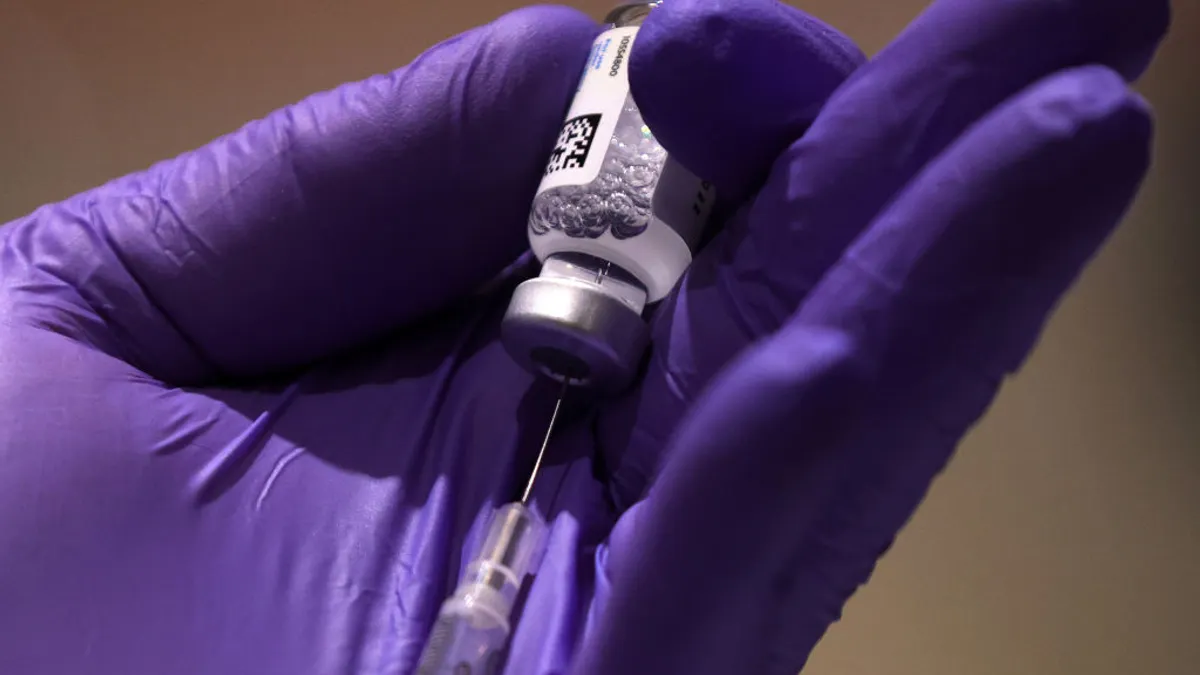After years of mounting frustrations in the field of Alzheimer’s treatments, the approval of disease-modifying anti-amyloid drugs like Leqembi from partners Eisai and Biogen is just one step in making a real difference for patients.

That step is nothing short of revolutionary, said Gene Kinney, CEO of Prothena Biosciences, a clinical-stage biotech with a pipeline in neurodegenerative and other protein misfolding diseases. But a common critique of Leqembi’s approval — and its $26,500 annual price tag — is that progress is too incremental.
“In my mind, there is nothing incremental about moving the treatment paradigm from drugs that treat symptoms to drugs that fundamentally delay the underlying biology of this progressive disease,” Kinney argued. The primary outcome of the Leqembi trial showed a 27% slowing in clinical dementia measurement over 18 months and a 37% slowing of decline in functional daily living.
Kinney harkens back to the first drug for HIV — called azidothymidine, or AZT — that was developed in the 1960s and ignited a treatment revolution. Many drugs have since followed in AZT’s footsteps, improving treatment by magnitudes and changing outcomes for patients over time.
“AZT wasn’t the last treatment for HIV because nobody stopped there despite the beneficial impact it had,” Kinney said. “And ultimately, we now commonly think of HIV as a chronically manageable disease, and that’s where we want to move Alzheimer’s — to a place where we improve the benefit and broaden the population to make it a manageable disease long term.”
Beyond new disease-modifying drugs approaching the market, Prothena is also looking at the next stage of Alzheimer’s therapy: disease prevention in early-stage or even non-symptomatic patients.
A preventive approach
Vaccines have worked wonders in infectious disease and are on the cusp of making a difference in cancer. A vaccine for neurologic diseases like Alzheimer’s would be monumental, Kinney said. Prothena’s PRX123, a preventive treatment targeting both amyloid beta and tau proteins in the brain, is in line for an investigational new drug designation from U.S. regulators this year.
In general, there are two approaches to prevention. Secondary prevention would occur in patients already showing biological signs of Alzheimer’s but still without cognitive decline. Primary prevention would give patients without biological signs of the disease an opportunity to avoid it altogether.
“In my mind, there is nothing incremental about moving the treatment paradigm from drugs that treat symptoms to drugs that fundamentally delay the underlying biology of this progressive disease."

Gene Kinney
CEO, Prothena Biosciences
“We think a vaccine could be the correct modality for that approach, much like we use vaccines in other areas of medicine,” Kinney said. “PRX123 is relatively unique [because] it simultaneously targets both the amyloid beta protein, which may be an early cause of the disease, but also the tau protein, which becomes a critical component of the disease in progressing to cognitive and functional deficits.”
Despite the different schools of thought between targeting amyloid beta and tau Kinney believes, like many others in the field, that both are viable approaches. Prothena has two candidates in early clinical trials that tackle each one: PRX012 for amyloid beta and PRX005 for tau.
“Ultimately, the field is getting excited about potentially using combination approaches in the context of disease,” Kinney said. “I think about it as a complex steam engine pushing a boat across the ocean, where amyloid beta is the coal that drives the engine, but there’s so much more going on that there are multiple ways to slow the boat.”
Comparing Alzheimer’s to yet another field of medicine, Kinney says the multimodality approach to cancer can inform drug development as well.
“Much like we see with oncology, if you think about [Merck’s] Keytruda as a foundational asset, you also see combination approaches that improve the efficacy profile,” Kinney said. “And that can mean a better slowing of disease in a patient population or it could mean expanding the patient population who may receive a benefit from those approaches.”
Collaborative efforts
Prothena has teamed up with Big Pharma partners to push its other candidates through clinical trials, including Roche for Parkinson’s disease and Novo Nordisk for ATTR amyloidosis. Most recently in the Alzheimer’s space, Prothena joined forces with Bristol Myers Squibb in a phase 1 trial for PRX005, the treatment targeting tau proteins.
As clinical trial design and recruitment take center stage while Alzheimer’s drug development ramps up further, Prothena has united with Walgreens to make studies more diverse and representative of the patient population. Underrepresentation of people of color has long driven concerns about addressable populations for new Alzheimer’s drugs.
“Something the industry spends a lot of time thinking about is how we make sure that we have diverse and representative patient populations in our studies so that we can make sure that they generalize in the commercial setting,” Kinney said. “And our partnership with Walgreens is a great example of using the skill sets and connections of a company like that to the advantage of patients.”
Clinical trials are difficult to design in Alzheimer’s due to the complexity of the disease and the measurement of dementia symptoms across large patient populations. But these trials are improving, Kinney said. The use of biomarkers and noninvasive brain scans to quantitate the level of plaque caused by amyloid beta and tau proteins have helped define the biological consequences, functional decline, dosing and endpoints of the trials.
“One of the things that we’ve seen in the field, because we had some level of nuanced understanding of the space, was the evolution of clinical trial design and execution,” Kinney said. “Science is an iterative process, and for a disease as insidious as Alzheimer’s is for society, it really does take a village — it takes every part of the scientific community to make meaningful progress in this space.”




















